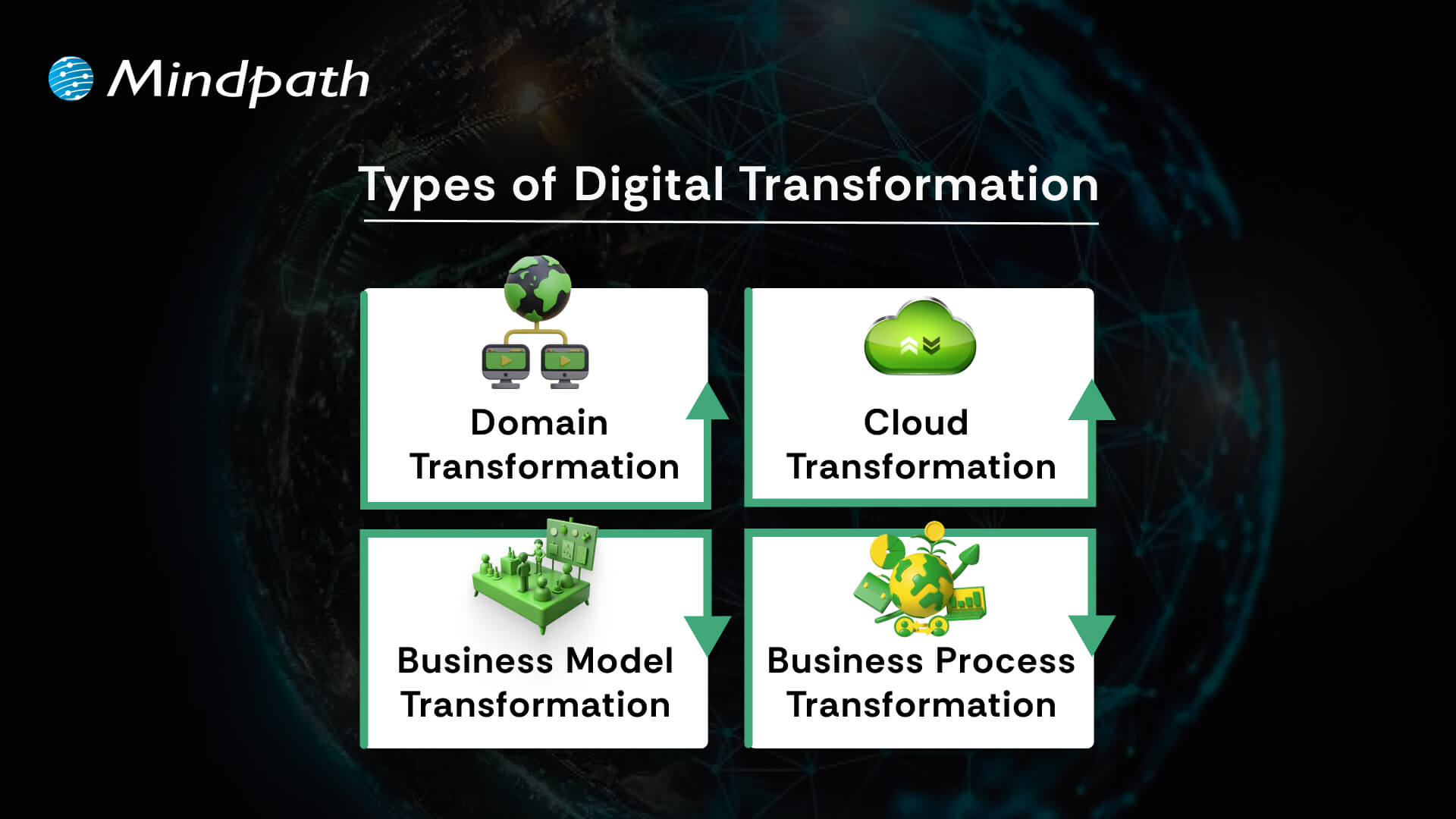In today’s rapidly evolving digital world, agile methodology is changing how businesses plan, build, and deliver projects. Rather than drawn-out timelines with large cycles of progress, teams are able to move steadily through short sprints with defined goals. This process allows leaders to maintain visibility at every stage of the project while maintaining a firm hold on customers’ needs. Isn’t that what every business wants, speed with flexibility? Using this process makes projects feel lighter, more reactive and adaptive, and easier to navigate and manage, thus transforming work into a journey of growth and learning.
At its core, agile emphasizes collaboration, transparency, and continuous improvement. Because everyone knows what to expect and when, the flow of work stays uninterrupted. There is a connection between teams and their clients that helps decrease surprises and strengthen trust. Small changes are easier to accommodate after the fact than big changes once the project is underway. In this blog, we will unpack Agile in extraordinary detail, illustrating why it is more than a method and how it leads to sustainable success.
Are you looking to achieve sustainable success for your business? Contact us to choose the right direction in this fast-paced digital world, and we will guide you on how you can enhance your business performance.
What is Agile Methodology?
The agile development meaning is simple and strong: it consists of a project management approach that splits the total work into smaller pieces we can manage as sprints. Each sprint focuses on delivering a usable output in which we can be flexible and adaptive to the process. Upon completing the sprint, we review where we have gone, gather feedback, and improve the next cycle. This way we are progressing, while having clarity, with a greater velocity, while getting closer to what customers want.
The agile methodology exists with the guidance of the Agile Manifesto, a guiding document of values and principles established in 2001 by software professionals, where the key aspects of collaboration, working software, flexibility, and customer satisfaction are prioritized over formalized processes. The Agile Manifesto lays out the values, which consist of 12 principles that teams can follow to help ensure consistent efforts to deliver value.
Below are the 4 values of Agile:
1. Individuals over Processes
Agile prefers a team working together, rather than strict processes.
2. Software over Documentation
Working software is more important than paper.
3. Customers over Contracts
Customers provide feedback to the development more than the details described in the contract.
4. Changeover Plans
Adapting to change is valued more than sticking to fixed plans.
What are the 12 Principles of Agile?
The 12 Principles of Agile methodology build on the 4 core values and are used to help put them into practice in real-world projects. They provide a key for teams to focus on collaboration and flexibility, and continuously deliver value to customers.
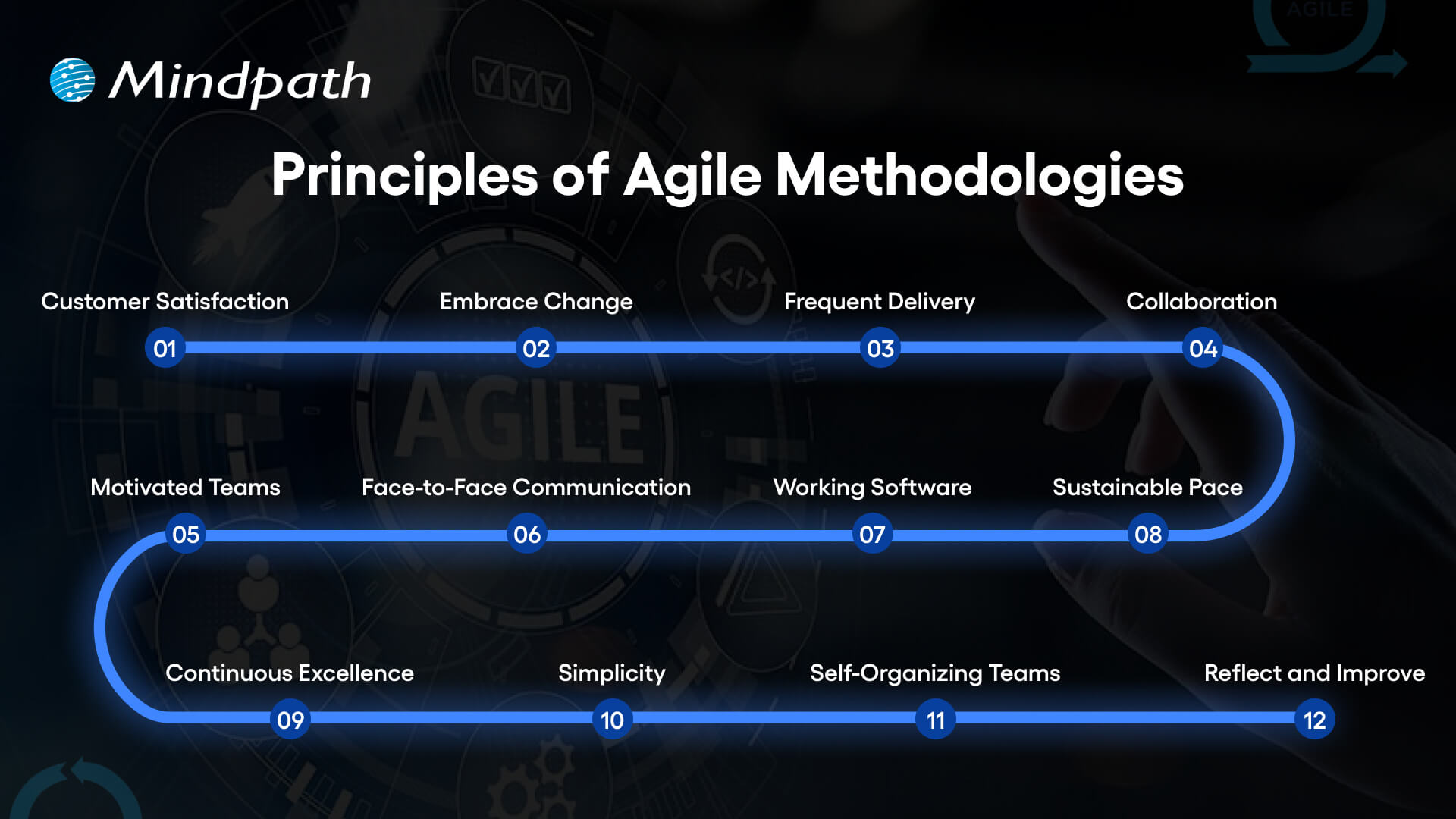
1. Customer Satisfaction
Customers should be satisfied by receiving value sooner rather than later.
2. Embrace Change
Adopt the mindset that the most valuable features might change and keep an open mind toward new needs, even late in a project.
3. Frequent Delivery
It’s important to deliver and share updates frequently to make sure that you’re showing consistent value to customers.
4. Collaboration
Remove silos and work together as a team.
5. Motivated Teams
Organize work around motivated individuals, people who are ready to work hard and have a commitment to their work.
6. Face-to-Face Communication
Conversations will make for a quicker, clearer understanding.
7. Working Software
Demonstrate progress with working software.
8. Sustainable Pace
Progress can continue if a sustainable speed is possible so that the team goes home and rests and comes back tomorrow.
9. Continuous Excellence
Strive to be smarter & faster by raising the quality.
10. Simplicity
Opt for the simplest & most effective solutions rather than the complicated & ineffective ones.
11. Self-Organizing Teams
Allow teams to organize themselves and provide real value.
12. Reflect and Improve
Regularly stop and reflect to learn and improve for value.
Advantages of Agile Methodology
Agile methodology provides a flexible approach to project management that keeps customer needs first. These are the main advantages that make it a highly-sought after strategy for modern development.
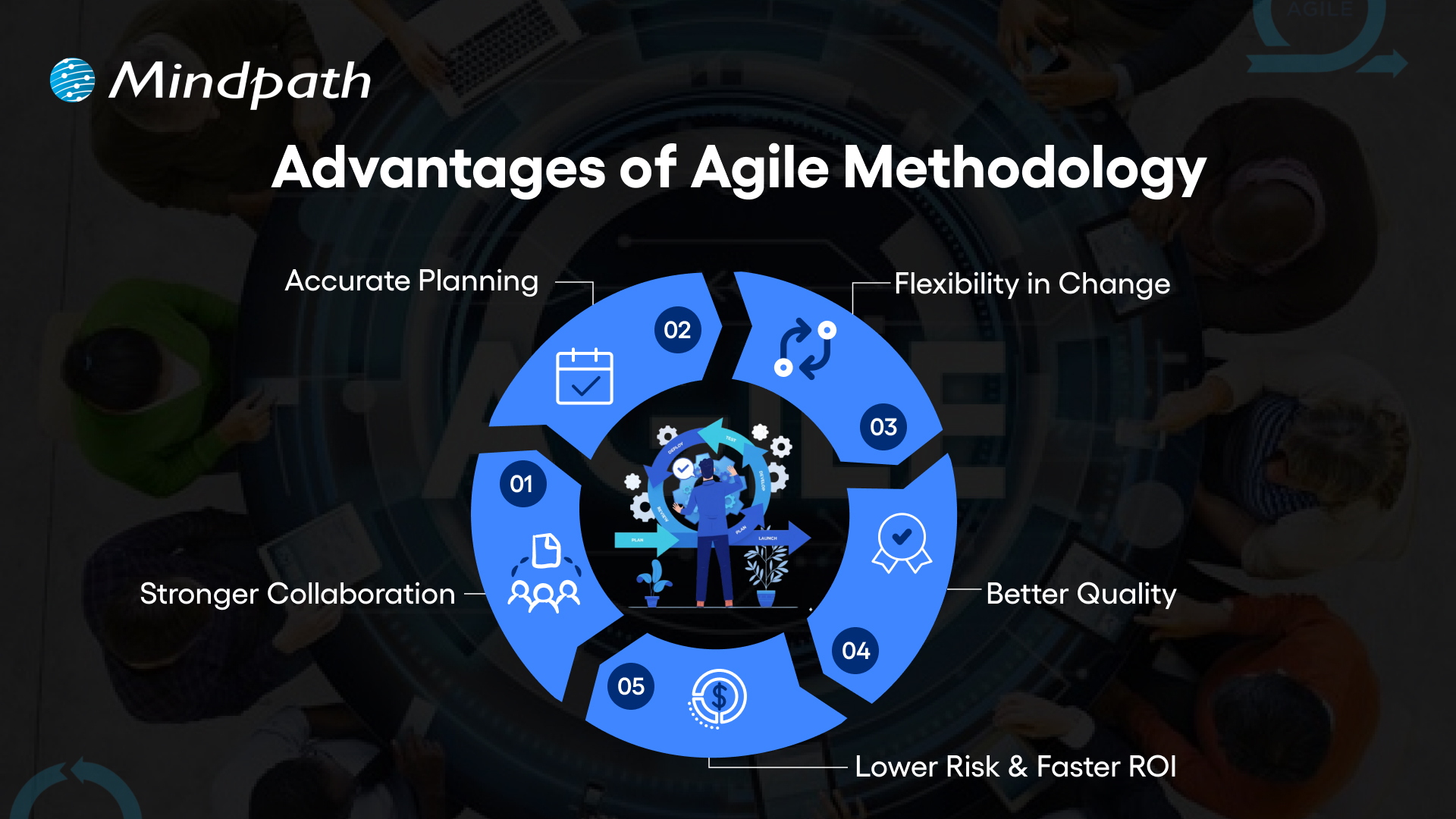
1. Stronger Collaboration
The agile methodology creates constant client involvement, building transparency, and ensuring developers stay aligned with real needs.
2. Accurate Planning
With agile, project managers can estimate costs and timelines more precisely through short, iterative sprints.
3. Flexibility in Change
Agile methodology project management allows quick adjustments to market shifts or client requirements without slowing progress.
4. Better Quality
Agile integrates continuous testing, which helps identify issues early and deliver reliable, high-performing products.
5. Lower Risk, Faster ROI
By following agile methodology practices, teams reduce risks with frequent feedback and deliver faster returns through incremental value.
What is the Process of Agile Methodology?
The agile methodology process emphasizes looking at projects in smaller, more manageable steps to create quick, flexible progress. The agile project methodology has teams working because of different cycles, quickly adapting to changes and delivering value in every step.
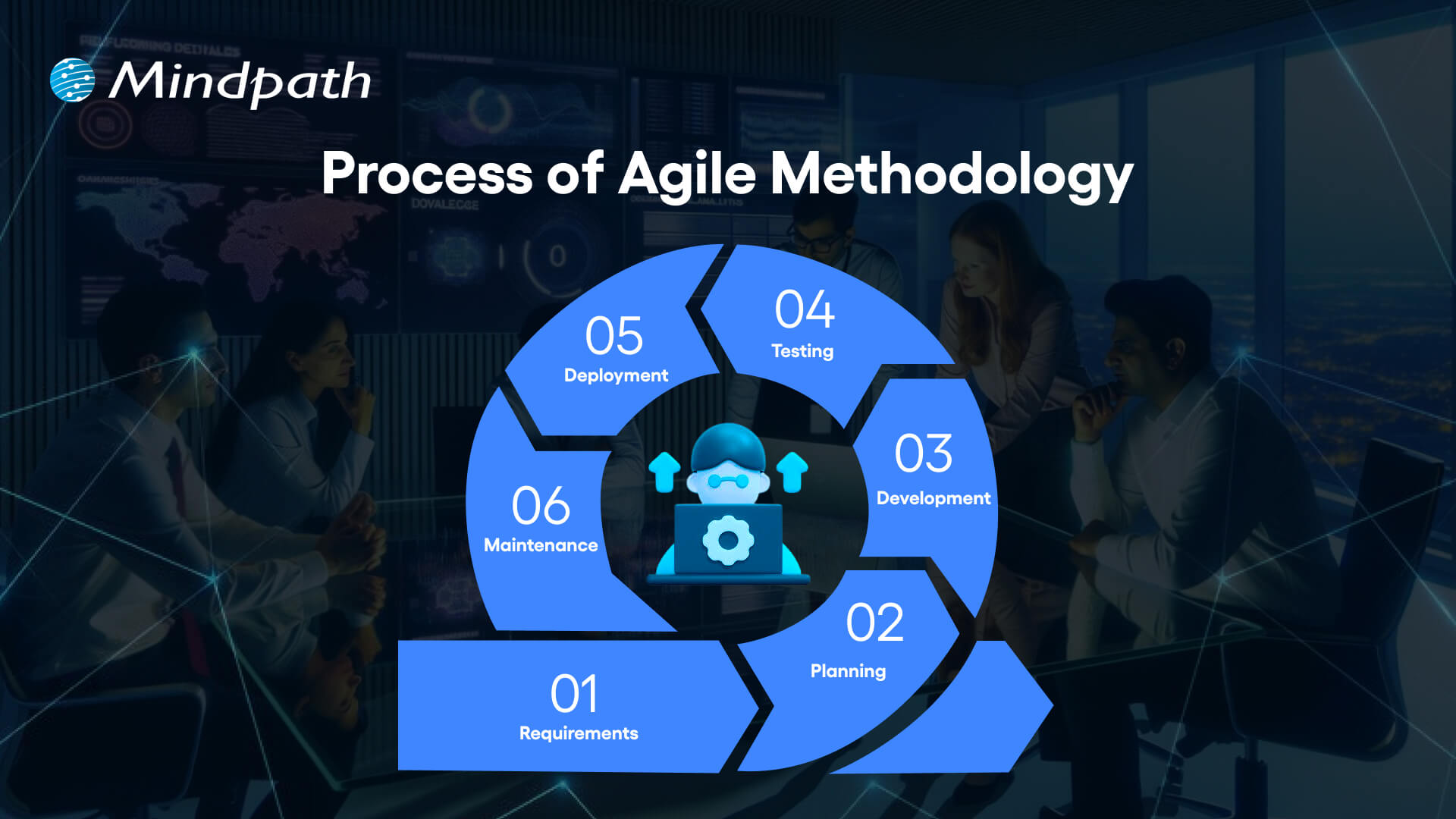
1. Requirements
Teams root through customer requirements and prioritize them against business objectives and user needs. It’s a liberation activity that sets the course of the project and a solid base for the later phases.
2. Planning
The planning phase creates a roadmap for development and delivery. Teams agree on the schedule, sprint goals, and resources within the confines of the agile framework to maintain flexibility.
3. Development
Developers develop features in short iterations using Agile methodologies. The aim is to deliver working software quickly across agile techniques; collaboration and adaptability are important.
4. Testing
Once a feature is built, the team immediately tests the feature. Testing is performed to ensure the software works properly and meets the quality expected by the customer.
5. Deployment
The product or feature is launched for actual use. Early releases will enable users to provide feedback that can inform future improvements in the agile methodology process.
6. Maintenance
Teams constantly maintain and enhance the software to meet customer requirements. In agile methodology, the maintenance step of the product becomes an evolving process within the context of ongoing agile system development.
When Does Agile Deliver the Most Value?
The agile style works best for projects that need flexibility and constant advancement. Here are several examples of where it offers the most value.
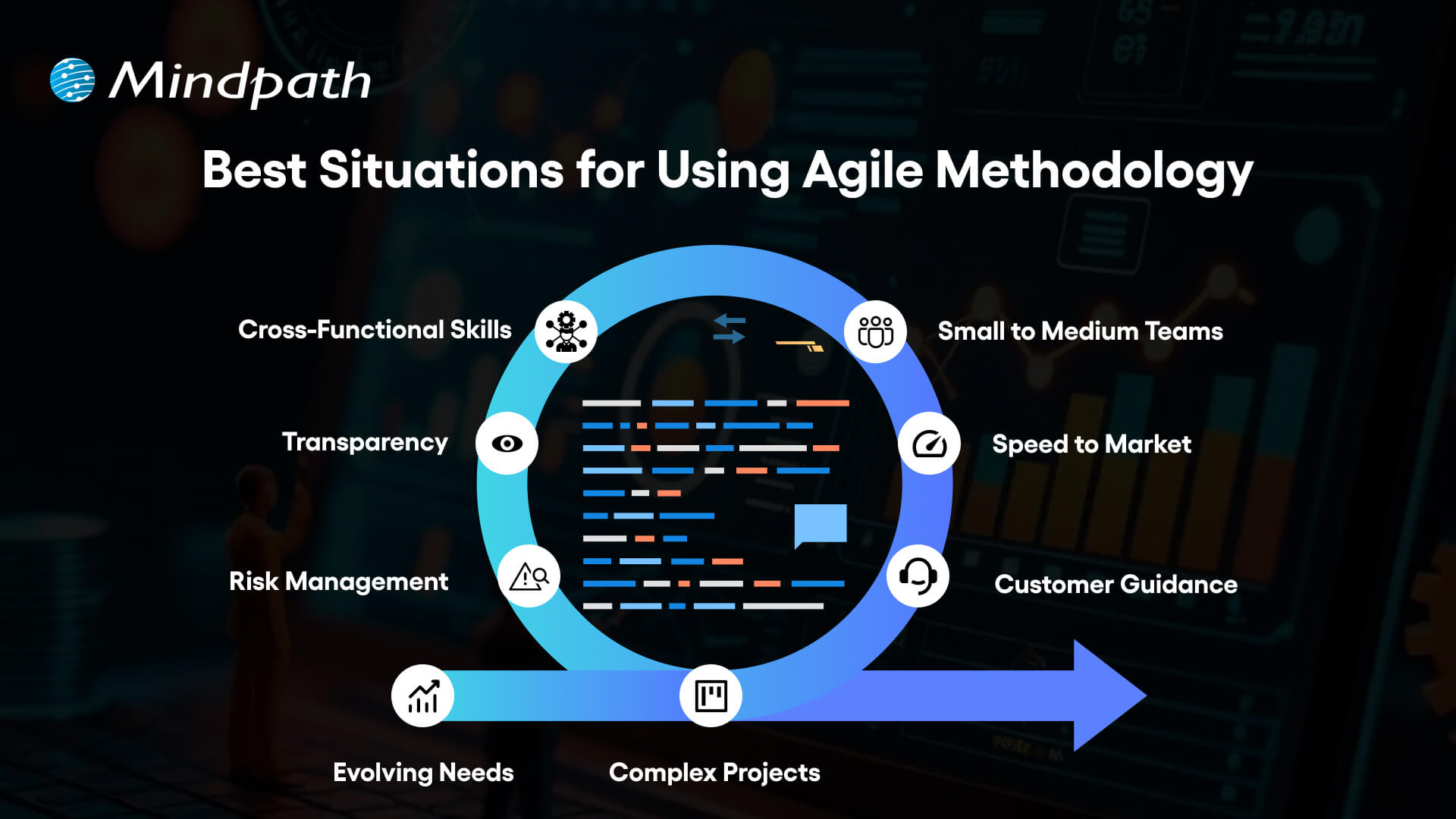
1. Evolving Needs
The agile methodology is the best option for projects with changing or ambiguous requirements because it allows teams to shift focus quickly while still maximizing delivery.
2. Complex Projects
Large and complex projects become easier to handle when broken into smaller, manageable parts. This approach reduces errors and improves coordination.
3. Customer Guidance
Regular customer feedback ensures the product meets actual needs. It creates a strong link between users and the development team.
4. Speed to Market
Short sprints make it possible to release working features quickly. This helps businesses gain a competitive edge faster.
5. Small to Medium Teams
Agile methodology works best for teams of a few to a few dozen people. It keeps communication simple and collaboration effective.
6. Cross-Functional Skills
Teams with developers, testers, and designers working together achieve higher quality. This collaboration reduces dependency on outside resources.
7. Transparency
Everyone involved can see the project’s progress clearly at all times. This openness builds trust and accountability.
8. Risk Management
Teams detect issues early and resolve them before they grow bigger. This approach reduces delays and prevents unexpected problems.
Want to Unlock Success with Agile Methodology?
The agile methodology has transformed how businesses manage projects, deliver value, and respond to change. Focusing on flexibility, collaboration, and continuous improvement, it gives teams the tools to adapt quickly while keeping customers at the center. Its principles and processes ensure projects move smoothly, delivering higher quality outcomes and long-term success in a competitive digital landscape.
At Mindpath, we use the agile methodology to design and deliver custom software that evolves with your business. Our approach blends speed, adaptability, and technical expertise to create solutions that meet real needs. With strong collaboration and a focus on innovation, we help businesses reduce risk, accelerate growth, and achieve sustainable results through high-performing, tailored products.











